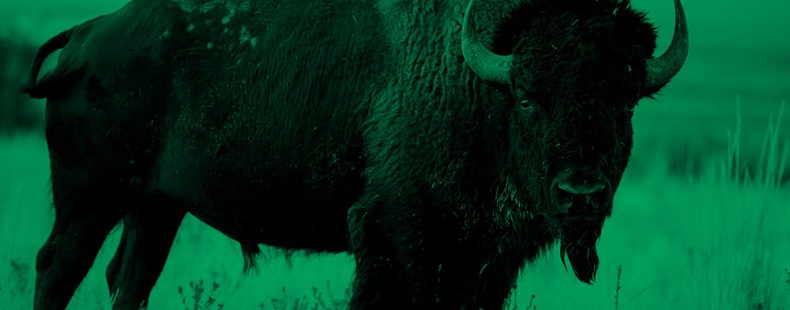⚡ Quick summary
Bison are sometimes called buffalo in casual use, but they are two different animals. Bison are native to North America and Europe, while buffalo are native to Africa and Asia. In general, bison have larger heads, humps, and overall size, while buffalo have longer, curvier horns.
Where do the buffalo roam? Many Americans may think they know the answer but would be in for a surprise when shown a picture of a buffalo. Which animal actually lives in North America—a bison or a buffalo?
In this article, we’ll explain what bison and buffalo are, provide differences to tell them apart, and briefly look at some of their closest relatives.
Are bison and buffalo the same?
The words buffalo and bison are often used interchangeably, especially in the United States. However, bison and buffalo refer to different animals. In fact, bison and buffalo don’t look like each other and don’t typically live on the same continents.
People in the U.S. commonly call the large, hairy, ox-like animal a buffalo, but that animal is actually a kind of bison. While we don’t know exactly where this common mix-up comes from, a popular theory is that early European settlers confused the American bison they found with the African and Asian buffalo they were familiar with. Whatever the reason, many Americans still mistakenly refer to bison as buffalo today.
What is the difference between bison and buffalo?
First of all, the words bison and buffalo don’t refer to single animals. There are two species of bison: The American bison (scientific name Bison bison) is also confusingly referred to as the American buffalo. The European bison (scientific name Bison bonasus) is also known as wisent.
The name buffalo is most often used to refer to African Cape buffalo (scientific name Syncerus caffer caffer), the domesticated Asian water buffalo (scientific name Bubalus bubalis), or the wild Asian water buffalo (scientific name Bubalus arnee).
The different species of buffalo and bison are related to each other because they are all bovines. That means they all belong to the Bovidae family (in taxonomy, a family divides into genuses and each genus divides into species). That makes buffalo and bison distantly related, with several differences that set them apart from each other. Let’s look at some major differences.
Native habitat
The two species of bison are named for where they live. American bison roam the grasslands of North America, while the endangered European bison mostly live in the forests of Eastern Europe.
African Cape buffalo are native to—you guessed it—the savannas and grasslands of Africa. Domesticated water buffalo can be found around the world, but wild water buffalo are native to the Indian subcontinent and southeast Asia.
Size
Both bison and buffalo are very large animals. Both species of bison tend to be larger than buffalo on average, reaching heights of 6 feet and weighing up to 2,000 pounds. African buffalo average up to 5 feet tall and up to around 1,800 pounds, and domesticated water buffalo have similar ranges. Wild water buffalo are even bigger, standing at over 6.5 feet tall and weighing over 2,500 pounds.
Head, hump, and horns
Bison have larger heads than buffalo and have beards. Bisons also have humps, which buffalo lack. However, buffalo make up for these shortcomings with their horns. African buffalo have long, horizontal horns that resemble bicycle handlebars, while water buffalo have long, crescent-shaped horns that stick up vertically and can grow up to 5 feet in length. Bison horns curve slightly out and up and are shorter, at about 2 to 2.5 feet long.
Animals similar to bison and buffalo
Bison and buffalo species are members of the Bovidae family. This family includes several other animals that have a passing resemblance to bison and buffalo, such as cattle, oxen, and yaks. All of these animals have cloven hooves, horns, robust sizes, and a somewhat similar body shape and appearance. Besides bison, all of these animals have also been domesticated by humans.














